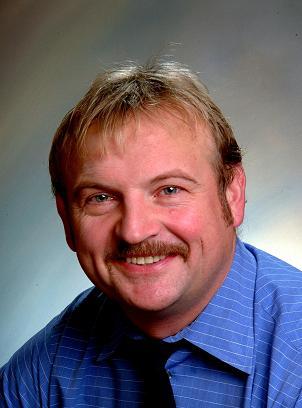

 Reference Site Map |
|
|

This is Part 2 of a series of articles on aging.
When that financial whiz Tom Dallimore asks me to pinch hit on the Grey Blades Hockey Club, I find myself paired up with a rugged looking defenseman by the name of Larry Dallimore, age 74, who plays a wicked game of hockey. Andy Bathgate, age 73, works at his driving range daily. Johnny Bower, age 81, plays one of the most consistent games of golf that you have ever seen. How many people do you know whose golf score is lower than their age? Mayor Hazel McCallion, nicknamed "Hurricane" Hazel, age 84, (turning 85 on February 14, 2006) has one of the most grueling schedules that you can imagine. What secrets have these people discovered?
Welcome to Mississauga: Video of Mayor Hazel McCallion from YouTube, 6:32 min.
There are cultures around the world where numerous members not only live to a ripe old age but also live life to the fullest. Taking a closer look, we find that there seem to be repeating patterns of contributing factors within these groups - basics that we need to learn from. Generally, they eat small meals rich in fresh fruits, vegetables and whole grains. Processed foods are rarely seen and they don't smoke. They tend to be socially active, have a strong sense of family and are able to maintain a cheerful composure. We physicians often witness how the same level of a given pain can produce a wide difference in response between patients ranging from indifference to complete disability. I have met many active ninety-year-olds. They often recall hardships of war and life, but virtually none ever recall withdrawing from life or work at the first sign of a sniffle or muscle ache. They have acquired a natural ability to never sweat the small things, which seems to promote longevity. They maintain a sense of religious faith, consume alcohol in moderation and most importantly, maintain an ongoing level of physical activity.
Sakhan Dosova, the oldest woman in the world, turns 130 this week from NowPublic, March 24, 2009.
Retirement is another of those dreaded terms for which there is no clear definition. To increase one's activity level in these golden years, when schedules have settled enough to even consider it, takes some doing. Exercise should be adjusted to your body status. For example, muscle tissues, white fibers responsible for short powerful bursts of anaerobic energy, lose mitochondria and some die off. They are replaced with fat and connective tissues resulting in less strength. The red muscle fibers used for endurance activity are less affected. That is one reason you see more older runners than weight lifters. Collagen and elastin fibers found in tendons and ligaments suffer from glycation, a process where the protein molecules tend to slowly become cross-linked with sugar molecules. This results in less resilience and allows for less flexibility. Eye muscles shrink slightly and the lens thickens producing a change in our vision. The joints between the hearing bones in our ears stiffen and affect our hearing. Pigment producing melanocytes in our hair cease production, resulting in grey looking hair. The gums are less able to support teeth, and even the immune system begins to dampen. It is true that women outnumber men in older age brackets, but the men tend to be hardier and more independent.
Starting an exercise program or a new sport in this time-tested crowd should be encouraged, but with caution. In my role as a coroner, I come across seemingly healthy folks who die unexpectedly. I see recurring themes in these cases. They often engage in unusually strenuous activities and have no idea of their health status. They don't die of heart attacks but they develop fatal heartbeats. So, a good place to start is with your doctor. A physical examination, blood, cardiac and lung tests are the basics of starting a new activity. One oldwives' tale suggests that you should never start a new sport after age 45. Nothing could be further from the truth. Moderation and maintenance are the rules. Your new level of enhanced activity should be determined with the help of health professionals who can set and monitor goals for you. With your physician's guidance as to restrictions, it is essential to learn how to properly warm up those golden muscles and how to monitor heart rate and pulse. Properly fitted equipment is more important to the older athlete, as is proper instruction. Young people tend to learn to golf by simply picking up a club and hitting some balls at a range. They sustain more injury due to poor style, but recover quickly and are less bothered by them. Obtaining proper instruction will result in less injury and higher self-esteem as skills improve. Nothing is more dangerous for the older athlete than to participate in exertion sports on an occasional basis. Hockey and running marathons are two examples. Adults over 45, whose only exertion is a weekly hockey game, are increasing their risk of a fatal heart rhythm by as much as 100-fold. Marathoners who only begin training within one month of the event risk similar dangers. Engaging in a new activity at a safe pace should occur 3-4 times a week to see a benefit. Injuries and pain must not be ignored. Pain is the body's warning system. Injuries must be properly evaluated and rehabilitated.